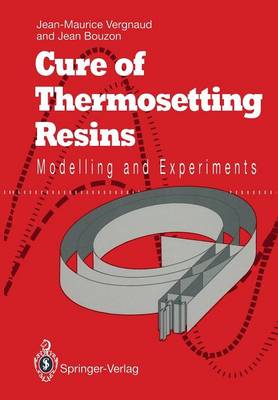The process of cure of thermosets is rather complex, and good knowledge of the various steps and different problems is necessary for the user. For instance, the following basic facts characterise the cure of thermosets: 1. In the same way as rubbers, thermosets are generally polymerised and processed in a simple operation which involves the irreversible transformation of a low molecular weight resin in viscous liquid state into a solid network polymer. The process of cure is thus much more important for thermosets or rubbers than for thermo plastics, because if something goes wrong during the cure process of thermosets, the final products may have undersirable properties and will be of no use or value, while the thermoplastic material can be melted again to make a new material. 2. In contrast with rubbers, a high exothermic cure reaction is the aspect of fundamental importance in the cure process for thermo sets. This high enthalpy of cure associated with a rather low thermal conductivity can give rise to an excessively high tem perature which may cause discoloration and degradation of the material, and also to substantial temperature gradients. The mat erial is thus heterogeneous during the process of cure, and these temperature-time histories in the resin may have some effects on the properties of the final material. 3. Moreover, the increase in production following the reduction in time of the cure cycle necessitates the use of a higher mould temperature.
- ISBN13 9781447119173
- Publish Date 1 December 2011 (first published 10 March 1992)
- Publish Status Active
- Publish Country GB
- Imprint Springer London Ltd
- Edition Softcover reprint of the original 1st ed. 1992
- Format Paperback
- Pages 382
- Language English
